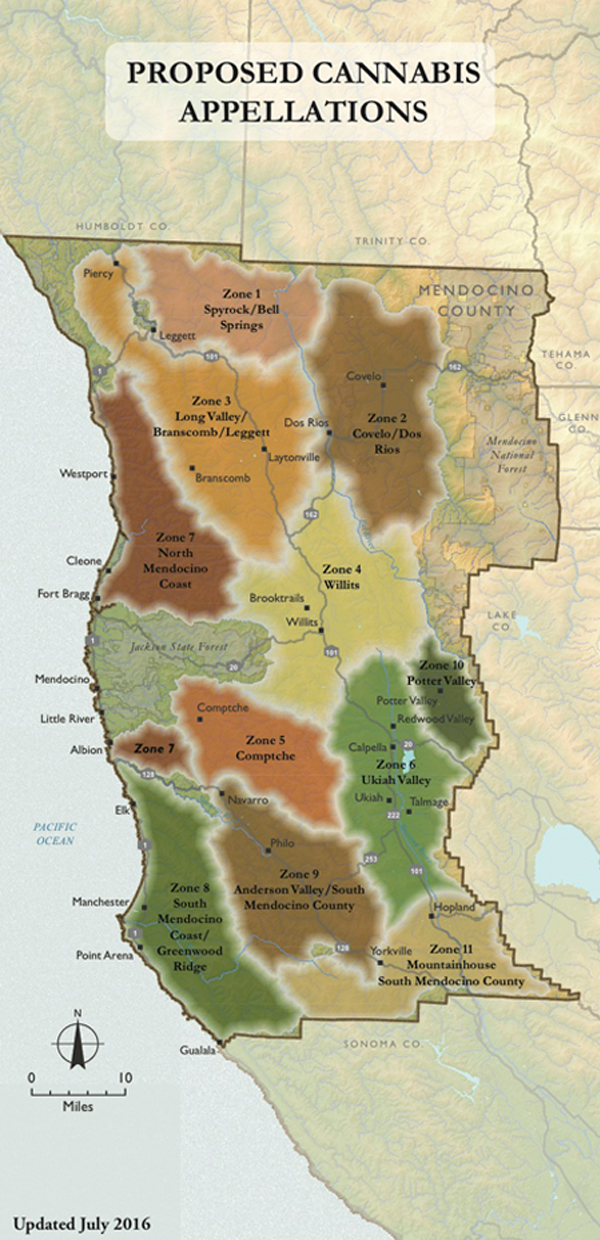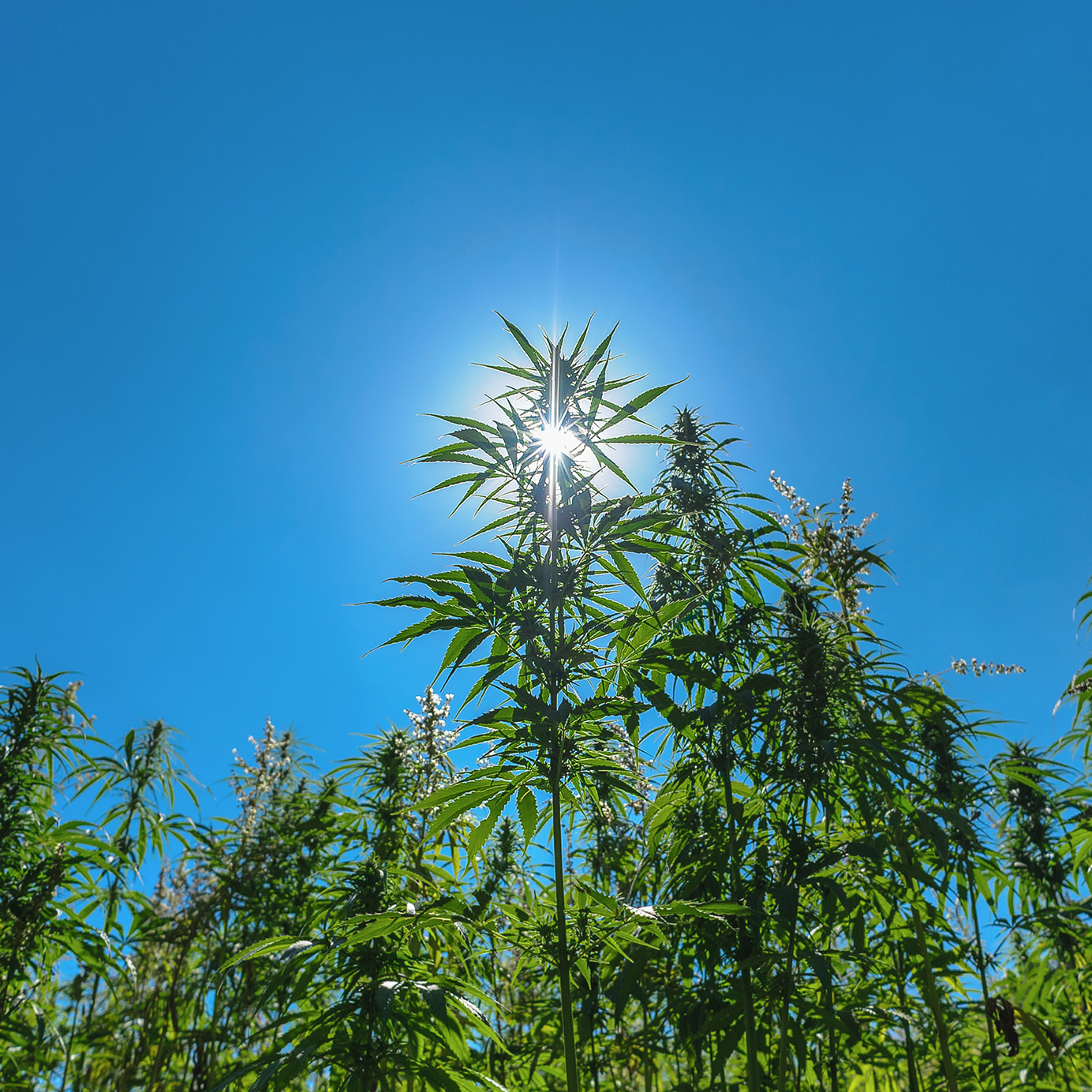In Mendocino, California, on the same grounds formerly occupied by Fetzer Vineyards, there is now a cannabis retreat institute called Flow Kana. Equipped with a processing plant to show visitors how fresh bud gets cured and ready for sale, as well as onsite workshops, yoga classes, and tours of nearby farms, Flow Kana prides itself on its transparent take on cannabis. The approach is much like that of quality vineyards with their wine, giving visitors an up-close look before product hits store shelves.
Mendocino is part of California’s Emerald Triangle, an area with redwoods, misty fog, rolling hills, and some 20,000 pot growers. It spans Mendocino as well as Humboldt and Trinity Counties, just north of Napa. And, like its wine-centric neighbors, the Emerald Triangle’s crops are garnering worldwide acclaim. Despite competition in Oregon and Colorado, California’s Emerald Triangle is the Napa of weed.
It’s no surprise that weed country and wine country are often one and the same. Much like fine wine, quality cannabis is judged according to the farmer’s relationship to the crop. Discerning consumers ask themselves if it’s sun-grown, pesticide-free, and environmentally sustainable.
“The story behind why people are making their products is important,” Michael Katz, co-founder of the Emerald Exchange, says. Katz’s Emerald Exchange is a statewide cannabis farmers market, connecting growers and consumers across California.
“In California, it’s not just about [cannabis] consumption, it’s about the community that’s creating it, and the focus on the community in this very specific geographic region,” says Katz. “Nowhere else has the same kind of history and heritage.”
On small-batch family farms in the Emerald Triangle, cultivators have the wherewithal to give their plants the necessary attention to deem them world-class quality. Even well-esteemed cannabis growers abroad such as Yohai Golan-Gild, founder of Israel’s second-largest medical marijuana production facility, Better, borrowed some techniques from northern California.
The Emerald Triangle is also the only place giving cannabis proper appellations — in California it’s written into state law. That’s because California has more outdoor growing than other states, according to Zev Ilovitz, president of Envirotech Greenhouse Solutions, which works with farmers around the world to build greenhouses. “Colorado has a few outdoor mega-farms, but not the community that northern California has,” he says. “People have been growing there for 40 years.”

What makes sungrown cannabis from the Emerald Triangle unique is the plant’s connection to the land, its socio-agricultural heritage. “Appellations play into that in a big way,” says Katz. “It’s understanding that there are strains of cannabis that have been grown generationally and bred to thrive in these specific environmental conditions and to bring in all these elements from the environment.”
The relationship between a plant and its environment is central to designating a product’s appellation, be it cannabis or wine. Cannabis cultivator Justin Calvino founded the Mendocino Appellations Project to communicate a cannabis crop’s origin story to the marketplace. As with wine, the appellation designates the product’s terroir, or the region, climate, and other environmental factors that impact its cultivation. (Indoor growers without a connection to their land cannot possibly create a “standard bearer of cannabis,” Ilovitz says.)
Logistical and legislative hurdles afflict growers and their consumers in regions without agricultural heritage. Ilovitz describes the best environments for greenhouse and outdoor growing as those with mild seasons that get as much sunlight as possible. “Basically the California coast,” Ilovitz says. “But most of that stuff is secondary to the fact that in many counties, you can’t get licensed to grow, or the taxes are very high.” When cannabis cultivators choose to grow where the regulatory burden is the lowest, good climate becomes an afterthought, Ilovitz adds.
Cannabis cultivators in the Emerald Triangle have a long and storied relationship to the land. It began with the “back to the land” movement of the ’60s and ’70s, during which disillusioned activists from the Bay Area pioneered up north to live off the grid and pursue a sustainable country lifestyle.
To honor that heritage, and to support the Emerald Triangle farmers who’ve become the standard bearers of cannabis, Flow Kana also functions as a syndicate of nearly 100 farms. Its model emulates South American coffee co-ops: Small and independent farmers maintain their own lands, but send their crops to a centralized facility for processing.
“In the marketplace, you’ll see definitions of quality and quantity shift to be more in line with how we see things like wine,” says Amanda Reiman, Flow Kana’s vice president of community relations. “Things like, is it small batch, how common is this strain, and is it something that only this farm grows, or something that half the farmers out there grow and is generic?”
And while once cannabis quality was in part determined by a plant’s percentage of THC — the main psychoactive compound in cannabis — nowadays consumers are coming to value nuance in a plant’s entire chemical profile, analyzing both the ratios of its cannabinoids (chemical compounds) and terpenes (aromatic compounds). “If one bottle of wine has more alcohol than another, it shouldn’t necessarily be more or less expensive,” Reiman points out.
One of Flow Kana’s goals is to represent the values of the farmers it works with, so that any cannabis product co-branded with Flow Kana’s name is guaranteed to be artisan from a small farm.
“When we look at reasons people go to wineries versus buying wine at a store, they’re looking for a relationship with the vintner, they want to see where their product was produced,” Reiman says. Under cannabis prohibition, consumers couldn’t easily seek out that intimate farmer relationship.
Now, thanks to legal California and cannabis tourism destinations like Flow Kana, they can.
